6th Army Group on:
[Wikipedia]
[Google]
[Amazon]
The 6th United States Army Group was an Allied Army Group that fought in the European Theater of Operations during
"On 3 May the 85th and 88th nfantryDivisions sent task forces north over ice and snow 3 feet deep to seal the Austrian frontier and to gain contact with the American Seventh Army, driving southward from Germany. The 339th Infantry
 6th Army Group – General
6th Army Group – General  Seventh Army – Lieutenant General Alexander M. Patch
***
Seventh Army – Lieutenant General Alexander M. Patch
*** 12th Armored Division – Major General
12th Armored Division – Major General  45th Infantry Division – Major General
45th Infantry Division – Major General  63rd Infantry Division – Major General Louis E. Hibbs
***
63rd Infantry Division – Major General Louis E. Hibbs
*** 100th Infantry Division – Major General
100th Infantry Division – Major General  10th Armored Division – Major General William H. H. Morris, Jr.
****
10th Armored Division – Major General William H. H. Morris, Jr.
**** 44th Infantry Division – Major General William F. Dean
****
44th Infantry Division – Major General William F. Dean
**** 103rd Infantry Division – Major General Anthony C. McAuliffe
***
103rd Infantry Division – Major General Anthony C. McAuliffe
***  3rd Infantry Division – Major General
3rd Infantry Division – Major General  20th Armored Division – Major General
20th Armored Division – Major General  42nd Infantry Division – Major General Harry J. Collins
****
42nd Infantry Division – Major General Harry J. Collins
**** 86th Infantry Division – Major General Harris M. McLaskey
*** XXI Corps – Major General
86th Infantry Division – Major General Harris M. McLaskey
*** XXI Corps – Major General  36th Infantry Division – Major General John E. Dahlquist
****
36th Infantry Division – Major General John E. Dahlquist
**** 101st Airborne Division – Major General Maxwell D. Taylor
**
101st Airborne Division – Major General Maxwell D. Taylor
**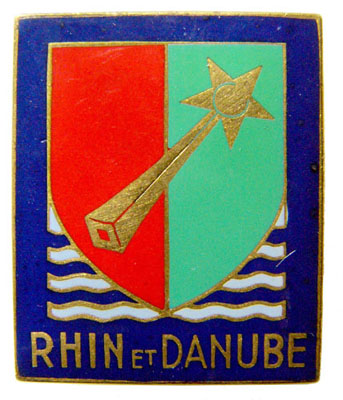
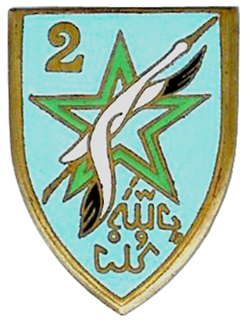 French
French  French
French 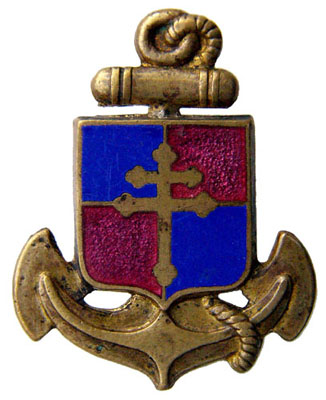 French
French  French 10th Infantry Division – Brigadier General Pierre Billotte
****
French 10th Infantry Division – Brigadier General Pierre Billotte
**** French 1st Armored Division – Brigadier General Aime Sudre
*** French 2d Corps – Lieutenant General Joseph de Goislard de Monsabert
****
French 1st Armored Division – Brigadier General Aime Sudre
*** French 2d Corps – Lieutenant General Joseph de Goislard de Monsabert
**** French 1st Motorised Infantry Division – Brigadier General
French 1st Motorised Infantry Division – Brigadier General 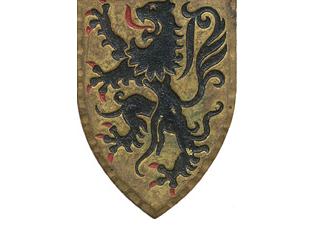 French 1st Infantry Division – Brigadier General Jean Callies
****
French 1st Infantry Division – Brigadier General Jean Callies
****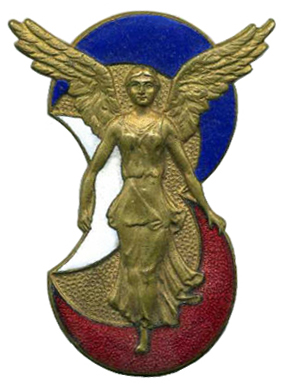 French 3rd Algerian Infantry Division – Major General
French 3rd Algerian Infantry Division – Major General  French 14th Infantry Division – Brigadier General
French 14th Infantry Division – Brigadier General  French 5th Armored Division – Brigadier General Guy Schlesser
**Detachment Army of the Alps – Lieutenant General Paul Doyen
***
French 5th Armored Division – Brigadier General Guy Schlesser
**Detachment Army of the Alps – Lieutenant General Paul Doyen
*** French 27th Alpine Infantry Division – Colonel
French 27th Alpine Infantry Division – Colonel
Narrative History of the 6th Army Group, SHAEF, Dwight D. Eisenhower Presidential Library
{{US Army navbox 06 Military units and formations established in 1944 Military units and formations disestablished in 1945
World War II
World War II or the Second World War, often abbreviated as WWII or WW2, was a world war that lasted from 1939 to 1945. It involved the vast majority of the world's countries—including all of the great powers—forming two opposing ...
. Made up of field armies
A field army (or numbered army or simply army) is a military formation in many armed forces, composed of two or more corps and may be subordinate to an army group. Likewise, air armies are equivalent formation within some air forces, and with ...
from both the United States Army
The United States Army (USA) is the land warfare, land military branch, service branch of the United States Armed Forces. It is one of the eight Uniformed services of the United States, U.S. uniformed services, and is designated as the Army o ...
and the French Army
The French Army, officially known as the Land Army (french: Armée de Terre, ), is the land-based and largest component of the French Armed Forces. It is responsible to the Government of France, along with the other components of the Armed Force ...
, it fought in France, Germany, Austria, and, briefly, Italy. Also referred to as the Southern Group of Armies, it was established in July 1944 and commanded throughout its duration by General Jacob L. Devers
Jacob Loucks Devers (; 8 September 1887 – 15 October 1979) was a general in the United States Army who commanded the 6th Army Group in the European Theater during World War II. He was involved in the development and adoption of numerous w ...
.
In a lead role in Operation Undertone
Operation Undertone, also known as the Saar-Palatinate Offensive, was a large assault by the U.S. Seventh, Third, and French First Armies of the Sixth and Twelfth Army Groups as part of the Allied invasion of Germany in March 1945 during Wo ...
, its Seventh Army fought its way across the Rhine into Germany, captured Nuremberg
Nuremberg ( ; german: link=no, Nürnberg ; in the local East Franconian dialect: ''Nämberch'' ) is the second-largest city of the German state of Bavaria after its capital Munich, and its 518,370 (2019) inhabitants make it the 14th-largest ...
and then Munich
Munich ( ; german: München ; bar, Minga ) is the capital and most populous city of the German state of Bavaria. With a population of 1,558,395 inhabitants as of 31 July 2020, it is the third-largest city in Germany, after Berlin and Ha ...
. Finally it crossed the Brenner Pass and made contact with the US Fifth Army
The United States Army North (ARNORTH) is a formation of the United States Army. An Army Service Component Command (ASCC) subordinate to United States Northern Command (NORTHCOM), ARNORTH is the joint force land component of NORTHCOM.
at Vipiteno
Sterzing (; it, Vipiteno ) is a comune in South Tyrol in northern Italy. It is the main town of the southern Wipptal, and the Eisack River flows through the medieval town.
History
Origin
The town traces its roots to 14 B.C., when Nero Claudius ...
, Italy.Fifth Army History • Race to the Alps, Chapter VI : Conclusio"On 3 May the 85th and 88th nfantryDivisions sent task forces north over ice and snow 3 feet deep to seal the Austrian frontier and to gain contact with the American Seventh Army, driving southward from Germany. The 339th Infantry
5th Division In military terms, 5th Division may refer to:
Infantry divisions
* 5th Division (Australia)
*5th Division (People's Republic of China)
* 5th Division (Colombia)
*Finnish 5th Division (Continuation War)
* 5th Light Cavalry Division (France)
*5th Mo ...
reached Austrian soil east of Dobbiaco at 0415, 4 May; the Reconnaissance Troop, 349th Infantry 8th Division 8th Division, 8th Infantry Division or 8th Armored Division may refer to:
Infantry divisions
* 8th Division (Australia)
* 8th Canadian Infantry Division
* 8th Air Division (People's Republic of China)
* 8th Division (1st Formation) (People's Repu ...
met troops from 03rd Infantry DivisionVI Corps of Seventh Army at 1051 at Vipiteno, 9 miles south of Brenner."
History
The Sixth Army Group was originally created in Corsica, France (specifically activated on 29 July 1944) as "Advanced Allied Force HQ", a special headquarters within AFHQ (the headquarters ofHenry Maitland Wilson
Field Marshal Henry Maitland Wilson, 1st Baron Wilson, (5 September 1881 – 31 December 1964), also known as Jumbo Wilson, was a senior British Army officer of the 20th century. He saw active service in the Second Boer War and then during the ...
, the Supreme Commander Mediterranean Theatre) commanded by Lieutenant General
Lieutenant general (Lt Gen, LTG and similar) is a three-star military rank (NATO code OF-8) used in many countries. The rank traces its origins to the Middle Ages, where the title of lieutenant general was held by the second-in-command on the ...
Jacob L. Devers
Jacob Loucks Devers (; 8 September 1887 – 15 October 1979) was a general in the United States Army who commanded the 6th Army Group in the European Theater during World War II. He was involved in the development and adoption of numerous w ...
. Its initial role was to supervise the planning of the combined French and American forces which invaded southern France in Operation Dragoon and provide liaison between these forces and AFHQ.Jackson, pp. 176 to 178 Dragoon was the operational responsibility of the Seventh United States Army commanded by Lt. Gen. Alexander Patch
General Alexander McCarrell Patch (November 23, 1889 – November 21, 1945) was a senior United States Army officer who fought in both world wars, rising to rank of general. During World War II, he commanded U.S. Army and Marine Corps ...
. Available to Patch were three corps (US VI Corps and French I and II Corps) and 24,000 Maquis of the ''Forces Francaises de l'Interieur''. The two French corps constituted ''French Army B'' commanded by Général
is the French word for general. There are two main categories of generals: the general officers (), which are the highest-ranking commanding officers in the armed forces, and the specialist officers with flag rank (), which are high-level office ...
Jean de Lattre de TassignyJackson, p. 176 (footnote) which was later renamed French First Army
The First Army (french: 1re Armée) was a field army of France that fought during World War I and World War II. It was also active during the Cold War.
First World War
On mobilization in August 1914, General Auguste Dubail was put in the ch ...
. Although Sixth Army Group Headquarters was officially activated on 1 August, it consisted of only the personnel of the Advanced Detachment AFHQ and, for reasons of security, retained the detachment title. The Advanced Detachment headquarters on Corsica had no command or operational duties and functioned primarily as a liaison and coordinating agency while preparing itself for the day it would become operational in France as Sixth Army Group headquarters.
Devers' headquarters remained subordinate to AFHQ during the invasion and in the weeks immediately afterwards while operational control of the troops on the ground resided with Patch until his forces linked near Dijon
Dijon (, , ) (dated)
* it, Digione
* la, Diviō or
* lmo, Digion is the prefecture of the Côte-d'Or department and of the Bourgogne-Franche-Comté region in northeastern France. the commune had a population of 156,920.
The earlies ...
, France, with Twelfth United States Army Group
The Twelfth United States Army Group was the largest and most powerful United States Army formation ever to take to the field, commanding four field armies at its peak in 1945: First United States Army, Third United States Army, Ninth United Sta ...
's Third Army advancing from the west after breaking out of the Normandy beachhead. At this time, on 15 September, Devers' headquarters was designated Sixth Army Group to take operational control of Seventh Army and French Army B and came under the overall command of General Dwight D. Eisenhower
Dwight David "Ike" Eisenhower (born David Dwight Eisenhower; ; October 14, 1890 – March 28, 1969) was an American military officer and statesman who served as the 34th president of the United States from 1953 to 1961. During World War II, ...
, the Supreme Commander at SHAEF
Supreme Headquarters Allied Expeditionary Force (SHAEF; ) was the headquarters of the Commander of Allied forces in north west Europe, from late 1943 until the end of World War II. U.S. General Dwight D. Eisenhower was the commander in SHAEF ...
(Supreme Headquarters, Allied Expeditionary Forces).
In late 1944 and early 1945 the Sixth Army Group was involved in fierce fighting in the Alsace repelling the German advance during Operation Nordwind
Operation Northwind (german: Unternehmen Nordwind) was the last major Nazi Germany, German offensive of World War II on the Western Front (World War II), Western Front. Northwind was launched to support the German Ardennes offensive campaign in ...
and subsequent pitched engagements closing off the Colmar Pocket. The 63rd Infantry Division was the first Seventh Army unit to cross the Siegfried Line, and the first to get an entire division through it. The 3rd Infantry Division suffered the highest casualty count of all US divisions, with over 27,000 casualties.
The Army Group later advanced through Bavaria
Bavaria ( ; ), officially the Free State of Bavaria (german: Freistaat Bayern, link=no ), is a state in the south-east of Germany. With an area of , Bavaria is the largest German state by land area, comprising roughly a fifth of the total lan ...
, and eventually into western Austria
Austria, , bar, Östareich officially the Republic of Austria, is a country in the southern part of Central Europe, lying in the Eastern Alps. It is a federation of nine states, one of which is the capital, Vienna, the most populous ...
in the waning days of the war. Elements of Sixth Army Group linked up south of the Brenner Pass on 4 May 1945 with troops of the Fifth United States Army of the Allied 15th Army Group advancing north from Italy
Italy ( it, Italia ), officially the Italian Republic, ) or the Republic of Italy, is a country in Southern Europe. It is located in the middle of the Mediterranean Sea, and its territory largely coincides with the homonymous geographical ...
. Germany surrendered on 9 May 1945.
The Sixth Army Group effectively disbanded on 15 June 1945 when the U.S. Seventh Army was selected, along with the Third Army, to form the occupation forces of Germany. It remained as an occupation and defensive force in southern Germany into the early 21st Century. It also occupied part of Austria until that country was released from occupation in the mid-1950s.
The French First Army reverted to the control of the provisional French government shortly after the surrender of Germany.
General Devers relinquished command of the Sixth Army Group in late June 1945 when he was selected to take command of the Army Ground Forces
The Army Ground Forces were one of the three autonomous components of the Army of the United States during World War II, the others being the Army Air Forces and Army Service Forces. Throughout their existence, Army Ground Forces were the large ...
in lieu of General Joseph Stilwell
Joseph Warren "Vinegar Joe" Stilwell (March 19, 1883 – October 12, 1946) was a United States Army general who served in the China Burma India Theater during World War II. An early American popular hero of the war for leading a column walking o ...
who was reassigned as commander of the Tenth United States Army
The Tenth United States Army was the last army level command established during the Pacific War during World War II, and included divisions from both the U.S. Army and the U.S. Marine Corps.
History
The headquarters of the Tenth Army was formed ...
following the death of General Simon B. Buckner, Jr.
The Sixth Army Group was officially disbanded on 20 July 1945.
Order of Battle – 8 May 1945
Order of battle shifted frequently in the Sixth Army Group, but accelerated dramatically during its late-war push through southernBavaria
Bavaria ( ; ), officially the Free State of Bavaria (german: Freistaat Bayern, link=no ), is a state in the south-east of Germany. With an area of , Bavaria is the largest German state by land area, comprising roughly a fifth of the total lan ...
into the Austrian Alps
The Central Eastern Alps (german: Zentralalpen or Zentrale Ostalpen), also referred to as Austrian Central Alps (german: Österreichische Zentralalpen) or just Central Alps, comprise the main chain of the Eastern Alps in Austria and the adjacent ...
to head off German establishment of a National Redoubt and close off passes to Nazi escape. Order of Battle on 8 May represents a significantly different disposition in some instances than in the weeks and even days leading up to it.
* 6th Army Group – General
6th Army Group – General Jacob L. Devers
Jacob Loucks Devers (; 8 September 1887 – 15 October 1979) was a general in the United States Army who commanded the 6th Army Group in the European Theater during World War II. He was involved in the development and adoption of numerous w ...
**Roderick R. Allen
Major General Roderick Random Allen (January 29, 1894 – February 1, 1970) was a senior United States Army officer, who commanded the 20th and 12th Armored Divisions during World War II. Under his command of the 12th AD, the division defended ...
*** 45th Infantry Division – Major General
45th Infantry Division – Major General Robert T. Frederick
Major General Robert Tryon Frederick (March 14, 1907 – November 29, 1970) was a senior United States Army officer who fought in World War II. During the war, he commanded the 1st Special Service Force, the 1st Allied Airborne Task Force, and t ...
***Withers A. Burress
Lieutenant General Withers Alexander Burress (November 24, 1894 – June 13, 1977) was United States Army officer who was a graduate and commandant of the Virginia Military Institute as well as a combat commander in World War I and World War II.
...
*** VI Corps 6 Corps, 6th Corps, Sixth Corps, or VI Corps may refer to:
France
* VI Cavalry Corps (Grande Armée), a cavalry formation of the Imperial French army during the Napoleonic Wars
* VI Corps (Grande Armée), a formation of the Imperial French army du ...
– Major General Edward H. Brooks
Lieutenant General Edward Hale Brooks (April 25, 1893 – October 10, 1978) was a senior officer of the United States Army, a veteran of both World War I and World War II, who commanded the U.S. Second Army during the Korean War. He received the ...
****XV Corps 15th Corps, Fifteenth Corps, or XV Corps may refer to:
*XV Corps (British India)
* XV Corps (German Empire), a unit of the Imperial German Army prior to and during World War I
* 15th Army Corps (Russian Empire), a unit in World War I
*XV Royal Bav ...
– Major General Wade H. Haislip
General (United States), General Wade Hampton Haislip (July 9, 1889 – December 23, 1971) was a senior United States Army Officer (armed forces), officer who served in both World War I and World War II, where he led the XV Corps (United States) ...
****John W. O'Daniel
Lieutenant General John Wilson O'Daniel (February 15, 1894 – March 27, 1975), nicknamed " Iron Mike", was a senior United States Army officer who served in World War I, World War II, and the Korean War. He is perhaps best known for serving wit ...
****Orlando Ward
Major General Orlando Ward (November 4, 1891 – February 4, 1972) was a career United States Army officer who fought in both World War I and World War II. During the latter, as a major general, he commanded the 1st Armored Division during Opera ...
**** 86th Infantry Division – Major General Harris M. McLaskey
*** XXI Corps – Major General
86th Infantry Division – Major General Harris M. McLaskey
*** XXI Corps – Major General Frank W. Milburn
Lieutenant General Frank William Milburn (January 11, 1892 – October 25, 1962) was a senior United States Army officer who served during World War II and the Korean War.
Military career
Milburn attended the United States Military Academy and ...
**** French 2nd Armored Division – Major General Philippe Leclerc
Philippe François Marie Leclerc de Hauteclocque (22 November 1902 – 28 November 1947) was a Free-French general during the Second World War. He became Marshal of France posthumously in 1952, and is known in France simply as le maréchal ...
****
French First Army
The First Army (french: 1re Armée) was a field army of France that fought during World War I and World War II. It was also active during the Cold War.
First World War
On mobilization in August 1914, General Auguste Dubail was put in the ch ...
– General Jean de Lattre de Tassigny
*** French 1st Corps – Lieutenant General Antoine Béthouart
Marie Émile Antoine Béthouart (17 December 1889 – 17 October 1982) was a French Army general who served during World War I and World War II.
Born in Dole, Jura, in the Jura Mountains, Béthouart graduated from Saint-Cyr military academy ...
**** French
French 2nd Moroccan Infantry Division
The 2nd Moroccan Infantry Division (french: 2e Division d'Infanterie Marocaine, 2e DIM) was an infantry division of the Army of Africa (french: Armée d'Afrique) which participated in World War II.
Created in Morocco following the liberation of ...
– Brigadier General François de Linarès
**** French
French 4th Moroccan Mountain Division
The 4th Moroccan Mountain Division (french: 4e Division marocaine de montagne, 4e DMM) was an infantry division of the Army of Africa (France), Army of Africa (french: Armée d'Afrique) which participated in World War II.
Created in Morocco foll ...
– Major General Rene de Hasdin
**** French
French 9th Colonial Infantry Division
The 9th Colonial Infantry Division (french: 9e Division d'Infanterie Coloniale, 9e DIC) was a French Army formation which fought in World War II and the War in Vietnam (1945–1946).
History
A 9th Colonial Infantry Division was being formed i ...
– Brigadier General Jean-Étienne Valluy
**** French 10th Infantry Division – Brigadier General Pierre Billotte
****
French 10th Infantry Division – Brigadier General Pierre Billotte
**** French 1st Armored Division – Brigadier General Aime Sudre
*** French 2d Corps – Lieutenant General Joseph de Goislard de Monsabert
****
French 1st Armored Division – Brigadier General Aime Sudre
*** French 2d Corps – Lieutenant General Joseph de Goislard de Monsabert
**** French 1st Motorised Infantry Division – Brigadier General
French 1st Motorised Infantry Division – Brigadier General Pierre Garbay
Pierre Garbay (4 October 1903 – 17 July 1980) was a French Army General.
Biography
Of modest origins, after completing high school, Garbay was admitted to Saint-Cyr military academy in 1921 and graduated as a sub-lieutenant in 1924. He then fo ...
**** French 1st Infantry Division – Brigadier General Jean Callies
****
French 1st Infantry Division – Brigadier General Jean Callies
****Augustin Guillaume
Augustin Léon Guillaume (30 July 1895 – 9 March 1983) was a French general. He served in the French Army beginning in 1913, during World War I and World War II. From August 1951 to May 1954, he served as the Resident-General in French Morocco, ...
**** French 14th Infantry Division – Brigadier General
French 14th Infantry Division – Brigadier General Raoul Salan
Raoul Albin Louis Salan (; 10 June 1899 – 3 July 1984) was a French Army general. He served as the fourth French commanding general during the First Indochina War. He was one of four retired generals who organized the 1961 Algiers Putsch op ...
**** French 27th Alpine Infantry Division – Colonel
French 27th Alpine Infantry Division – Colonel Jean Vallette d'Osia
Jean Vallette d'Osia (16 August 1898 - 28 February 2000) was a French officer best known for his action in the French Resistance during World War II in Haute-Savoie, notably supervising the liberation of Lyon.
He ended his career in 1958 with the ...
See also
* Operation Dragoon * Colmar Pocket *Western Allied invasion of Germany
The Western Allied invasion of Germany was coordinated by the Western Allies during the final months of hostilities in the European theatre of World War II. In preparation for the Allied invasion of Germany east of the Rhine, a series of offensi ...
Citations and notes
References
* * *Further reading
* Harry Yeide, Mark Stout, ''First to the Rhine: The 6th Army Group in World War II'', Zenith Press, 2007 * ''Decision at Strasbourg'' by David Colley. In November 1944, the 6th Army Group reached the Rhine river at Strasbourg, France. Lt. General Jacob Devers wanted to cross the Rhine into Germany but the plan was vetoed by General Eisenhower. http://www.armchairgeneral.com/decision-at-strasbourg-book-review.htm * "How World War II Wasn’t Won" – Op Ed ''NY Times'', David Colley https://www.nytimes.com/2009/11/23/opinion/23colley.htmlExternal links
Narrative History of the 6th Army Group, SHAEF, Dwight D. Eisenhower Presidential Library
{{US Army navbox 06 Military units and formations established in 1944 Military units and formations disestablished in 1945